Copyright 2020 - 2021 irantour.tours all right reserved
Designed by Behsazanhost
Religious Institutions in Iran
Religious Institutions in Iran
The mosque (masjid in Arabic and Persian, literally “a place of prostration") is the most important religious institution in Iran. Larger congregational mosques (Masjed Jame) are intended for Friday prayers. The first mosque was copied from the house of the Prophet Mohammad at Medina and had a very simple and austere design(1). This mosque was an enclosure surrounded by mud-brick walls.It was covered by a flat wooden or reed mat roof resting on mud or brick supporting pillars on the qibla side (the side facing Mecca), and occasionally on other sides as well. Throughout the Islamic world, which stretched from Spain to India, the structure of the mosque was influenced by local materials and architectural traditions. Within Iran, a distinctive mosque type, laid on the foundations of its Sasanid predecessors, has been developed. This mosque consisted of large prayer halls arranged around a courtyard and entered through Eivans (porches). In the first mosques, which were converted from Sasanid fire temples, usually, one Eivan was built(2). It marked the qibla side and highlighted the sanctuary of the former fire temple. Soon afterward, the opposite, northern wall of the mosque's courtyard was also emphasized by the Eivan(3). The Iranian mosque took its final form in the 12th century with the four-eivan structure(4).
The Mosques in Islamic Cities |
 |
| Historical Evolution of Iranian Mosques |
The Congregational Mosque of Zavareh is the first mosque of this peculiar Iranian type. Although the mosque has undergone many architectural changes, it essentially remains an open space, generally roofed over, containing a mihrab and a Minbar, with a minaret sometimes added to it. An ablutions pool, containing running water, is usually attached to the mosque but may be separated from it. Each mosque is built with one of its walls facing Mecca. In the decorative treatment of Iranian mosques, glazed tiling with floral and geometric motifs has become a specific feature. The prolific use of calligraphy, brick bonding patterns, Moqarnas, and stucco work is the other most important elements of architectural ornamentation.
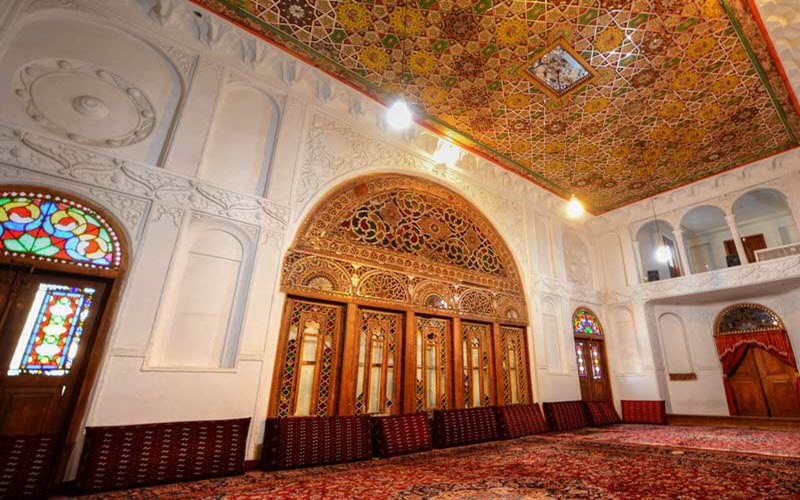 |
| Aminiha Hoseinie Qazvin |
Another significant religious institution in Iran is the Hosseiniyeh. It traditionally serves as a site for recitals commemorating the martyrdom of Imam Hossein, especially during the month of Moharram, as well as for other public gatherings. Takiyah generally has the same function. The Madrasah, or seminary, is an institution providing religious education, Students, known as Talabeh, usually study for a minimum of seven years, to become a low-level preacher or mullah. Higher ranked clergymen include Hojjat al-Islam and Mojtahed (or Ayatollah). The Shiite clergy in Iran usually wear a white turban and an aba (a loose, sleeveless brown or black mantle). If a clergyman is a seyed (descendant of the Prophet Mohammad), he wears a black turban.
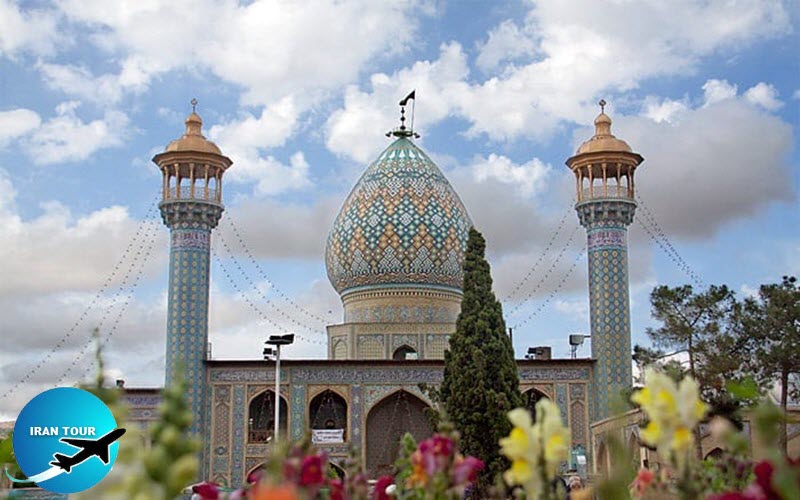 |
| Ali Ibn e Hamze Imamzade Shiraz |
In theological colleges, the main Eivan is usually the entrance to the domed chamber or else leads directly to the prayer room. Depending on the situation of the college, the other eivans are used as classrooms; frequently one of the three remaining eivans forms the main entrance to the college. Other major religious institutions in Iran are shrines. Pilgrim shrines and mausoleums are built on top of the graves of Imams or Imamzadehs (the descendants of Imams), or other saintly persons. There is an uncountable number of shrines that vary from tumbledown sites associated with local saints to imposing mausoleums, such as those of Imam Reza in Mashhad and his sister Masumeh in Qom. The buildings sometimes take the form of a square structure surmounted by a dome, but usually the base structure is an octagon in which case the dome is pyramidal or conical in shape. In proportion to the importance of the site, it is often provided with auxiliary buildings on all sides. Important pilgrim shrines, beside numerous outbuildings, have multiple courtyards lying in various directions in relation to the main building. Less important shrines are constructed in the form of a solitary, kiosk-like building in the center of an enclosure. The other traditional religious institutions are khaneqahs, dervishes' cloisters many of which still exist in Iran.
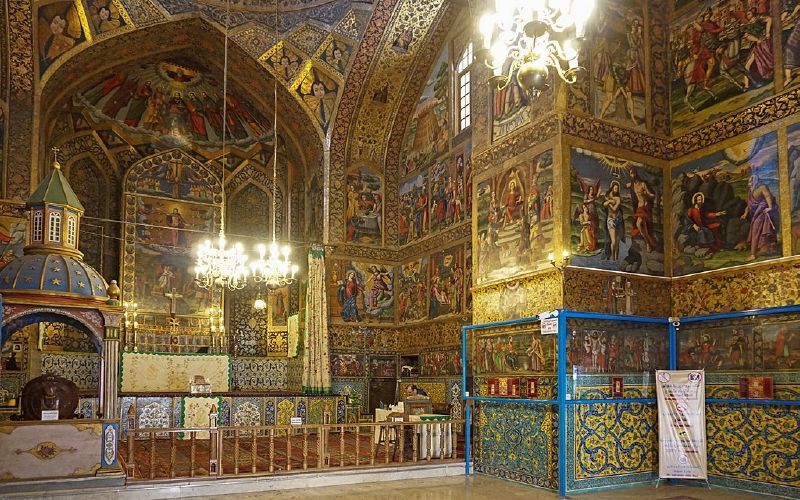 |
Non-Muslim Minorities
Christians
Christianity had already found a foothold in Iran by the 1st century when St. Thaddeus's Church was built in c. 68 A.D. in Western Azerbaijan. The remains of the 3rd-century church on Khark Island still survive. Persian Christians are known to have gone to China as missionaries as early as the 7th century. Modern missions by Roman Catholic monks began in Iran in the 16th century. They preached mainly among the Armenians in Esfahan and Tabriz. For a time, they were quite successful, but afterward, the success of their work declined. An effort among the Nestorians in the 18th century was more fruitful. The earliest Protestant missionaries were Moravians who came to evangelize the Zoroastrians in 1747.
They were unable to remain, owing to the civil disturbance in the country. Henry Martyn was a pioneer of the 19th century and left the Persian version of the New Testament as his legacy. This was followed by Dr. Glen's version of the Old Testament. Today Iran's indigenous Christians include Armenians, Assyrians, and a small number of Roman Catholic, Anglican, and Protestant Iranians. The Armenians are predominantly urban and are concentrated in Tehran and Esfahan. The Armenians and the Assyrians are recognized as official religious minorities under the 1979 Constitution. They are entitled to elect their own representatives to the Majles (Parliament) and are permitted to follow their own religious laws in matters of marriage, divorce, and inheritance. However, all Christians are required to observe the laws relating to attire, the prohibition of alcohol, and segregation by sex in the streets and other public gatherings. Iranian Christians have churches and chapels throughout the country, including several large cathedrals. At present, four monasteries exist in Iran: two in Azerbaijan and two in Esfahan.
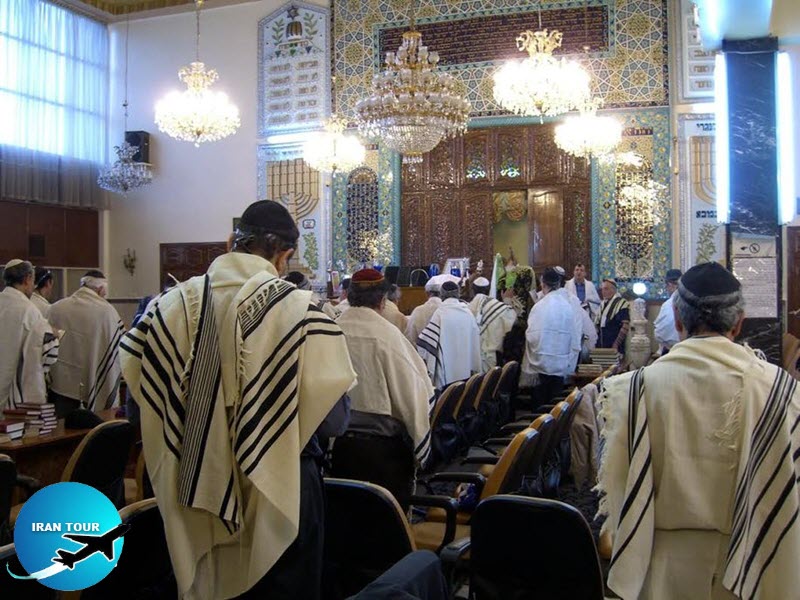 |
Jews
The Iranian Jewish community is one of the oldest in the world, having descended from the Jews who remained in the region following the Babylonian captivity under Cyrus the Great. For many centuries, a large and flourishing Jewish community existed in Esfahan. In fact, Esfahan itself came into being when the town of Yahudiyeh ("Jewish city'), merged with Jay. Over the centuries, the Jews of Iran became physically, culturally, and linguistically indistinguishable from the non-Jewish population. They are predominantly urban and by the 1970s were concentrated in Tehran, Esfahan, and Shiraz. The Constitution of 1979 recognizes the Jews as an official religious minority and accords them with the right to elect a representative to the Majles. Among the most important Jewish shrines in Iran are Esther and Mordecai in Hamadan and Prophet Daniel in Susa.
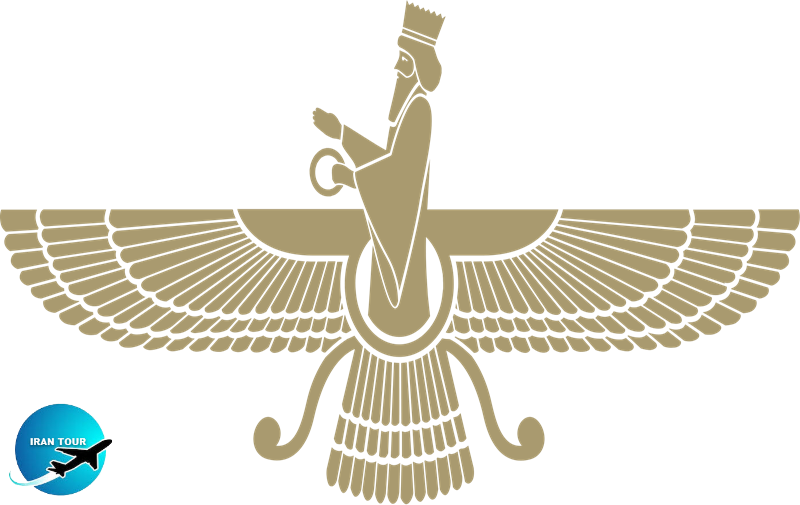 |
Zoroastrians
As in the case of Christians and Jews, Zoroastrians in Iran are recognized as an official religious minority. They are permitted to elect one representative to the Majles and generally enjoy the same civil liberties as Muslims. Zoroastrians believe in One Supreme God, called Ahuramazda, who is opposed by Ahriman, an embodiment of evil. Every human being must cooperate with God to defeat evil and bring the world to perfection. This can be achieved through good thought, good words, and good deeds. After death, the immortal soul of the departed person is judged according to all the good deeds done by him or her in this world. The soul then enjoys the pleasures of paradise or undergoes the torture of hell. Zoroastrians also believe in the appearance of the last savior, called Sosayant, and in the final judgment day with the resurrection of all who have died. Yazd is the most important Zoroastrian center in modern Iran. Although there are practically no Zoroastrians in Esfahan now, the remains of a fire temple on the city's outskirts (p145) bear witness to their presence here in earlier periods.
Mithraism
There are no followers of Mithra in Iran anymore, but the traces of this ancient cult are numerous, and the Niasar Cave (pp 206-207) is only a single example. Mithraism was the worship of the ancient Indo-Iranian god of light, Mithra. Mithraism had a great impact on Zoroastrianism, Buddhism, and Christianity. Mithra's followers celebrated December 25 as the date of Mithra's birth. Because Mithra was associated with the Sun, Sunday was chosen as the day of his worship. Among the ceremonies of the Mithraist cult were baptism in holy water and partaking of a Sacred meal of bread and wine. The most important ritual was the slaying of the bull, a reenactment of Mithra's killing of the cosmic bull of creation, which symbolized the conquest of evil and death. After passing several ordeals, the converts were reborn" in Mithra. There were seven grades of initiation into the cult, completion of which conferred immortality. For a long time, Mithra was widely worshipped in the Roman Empire, though whether it was the same cult as in Iran is unclear.
- Details
- Category: IRAN Blog